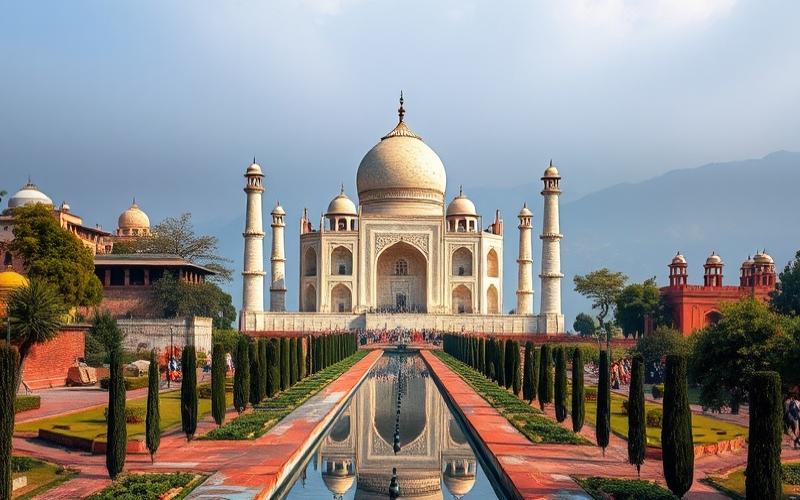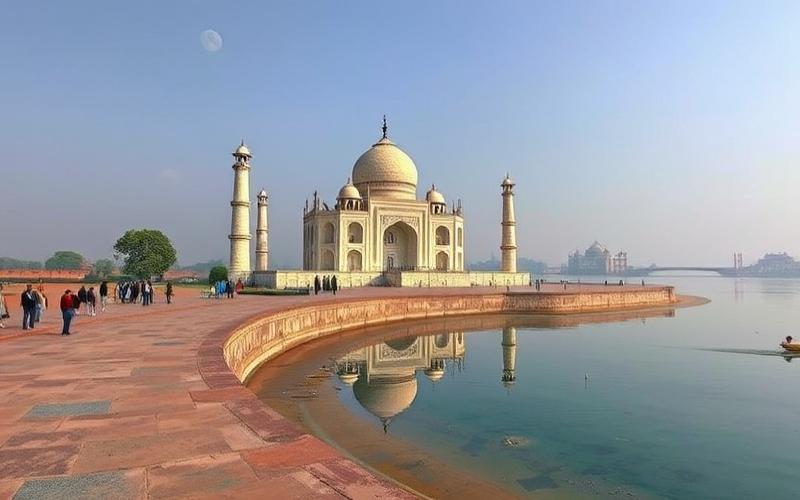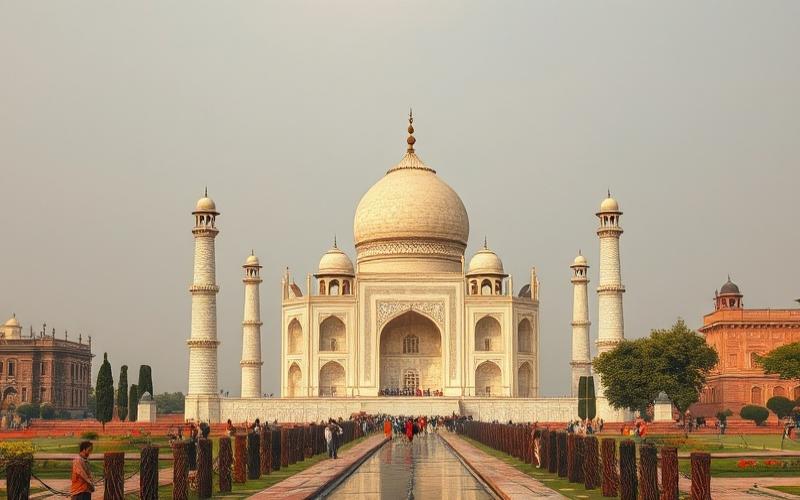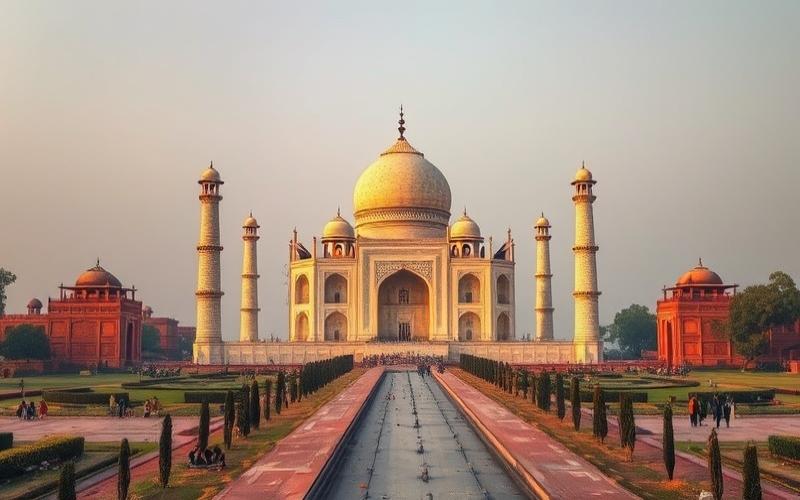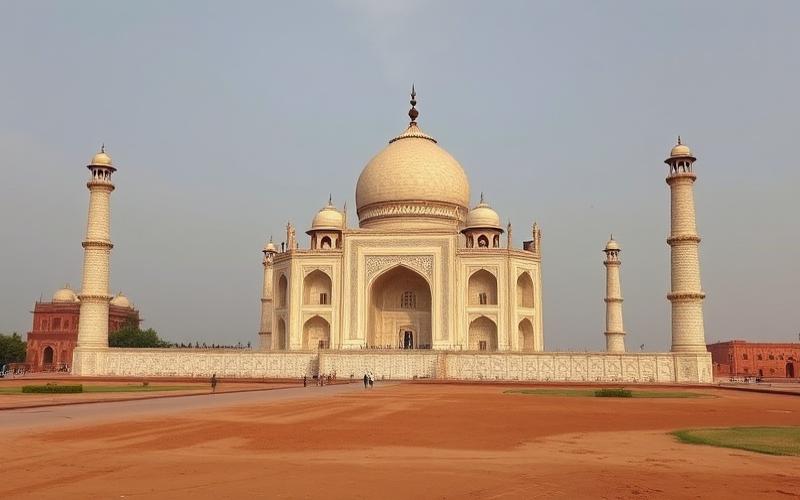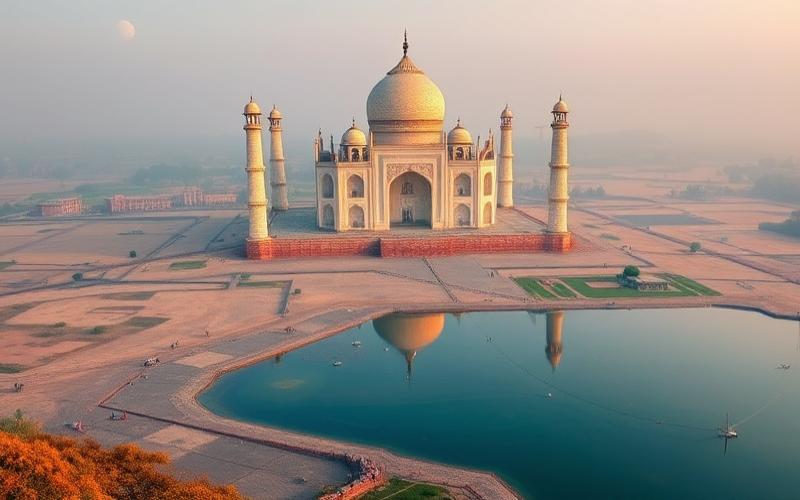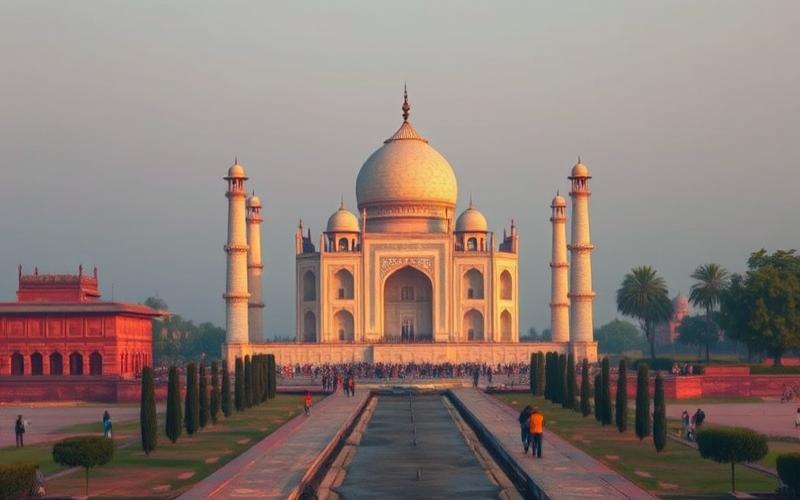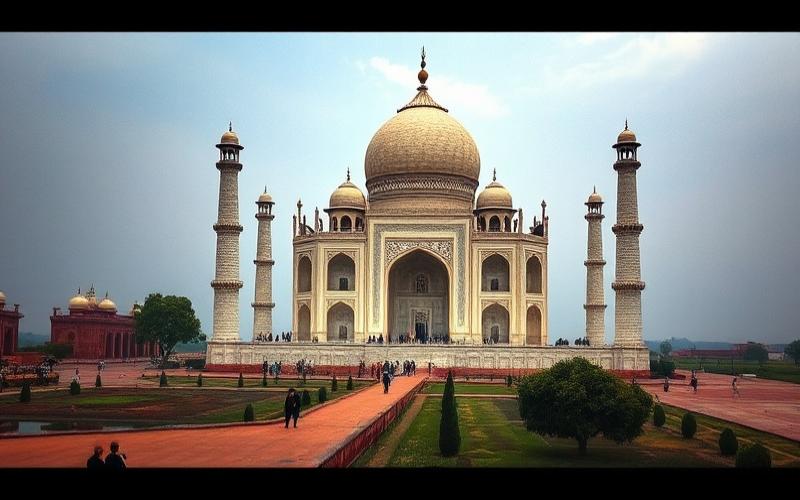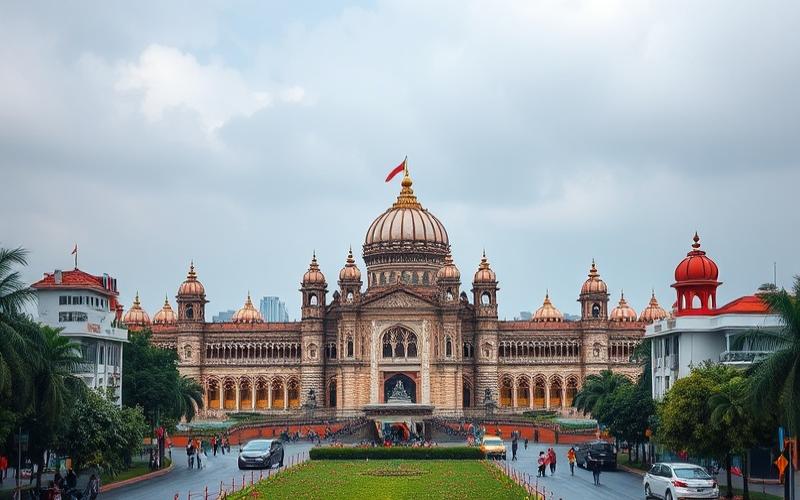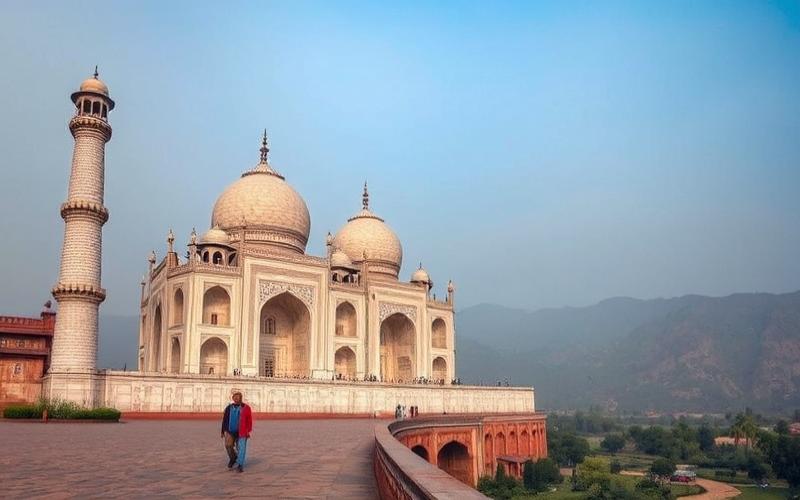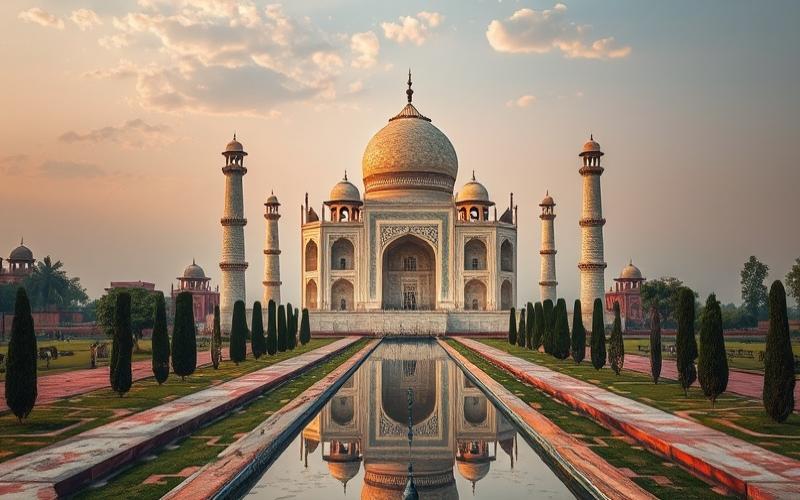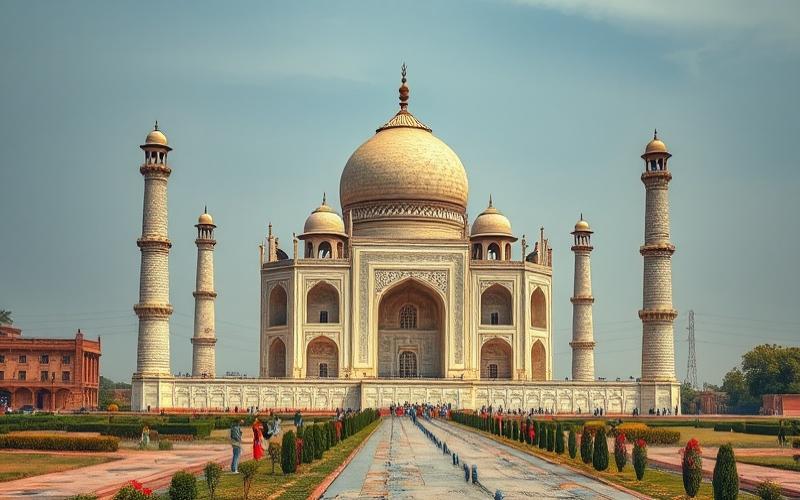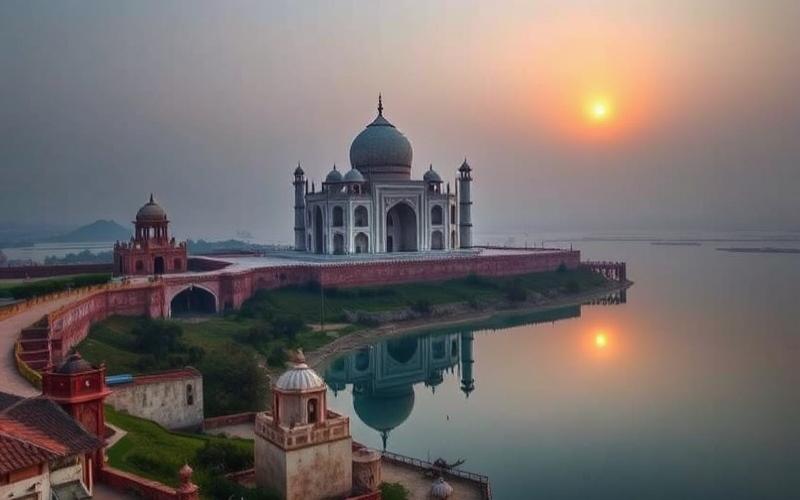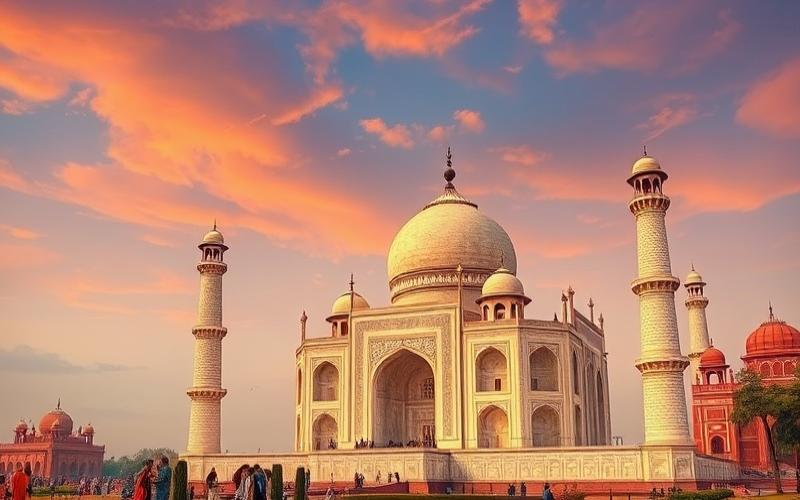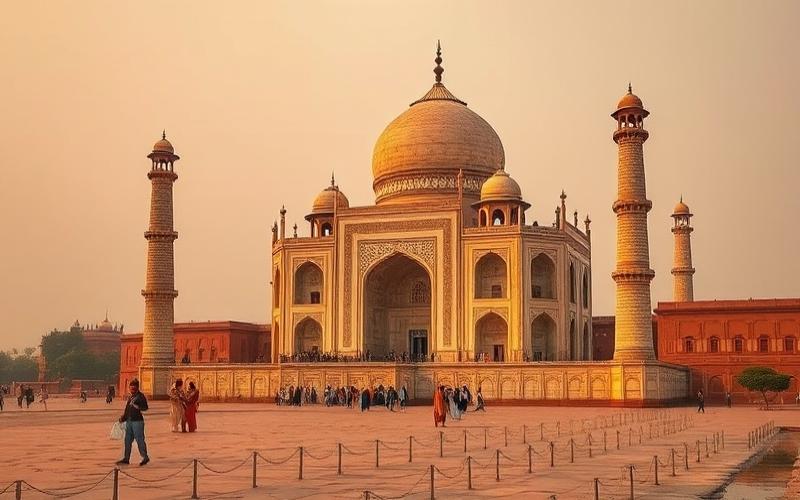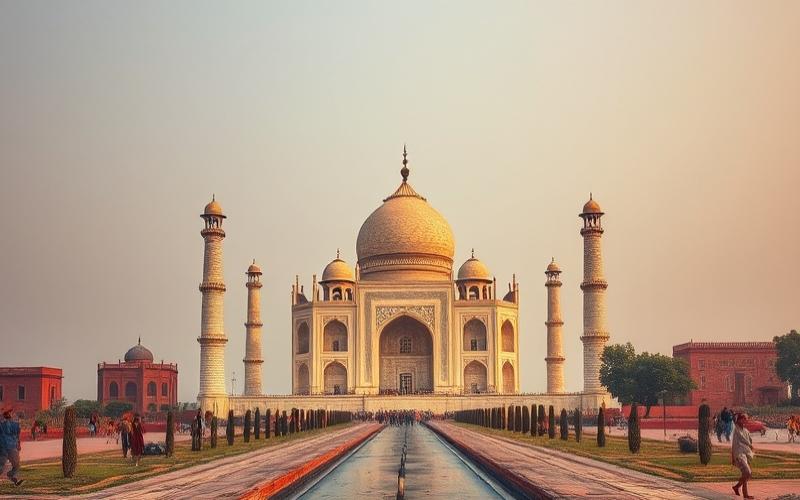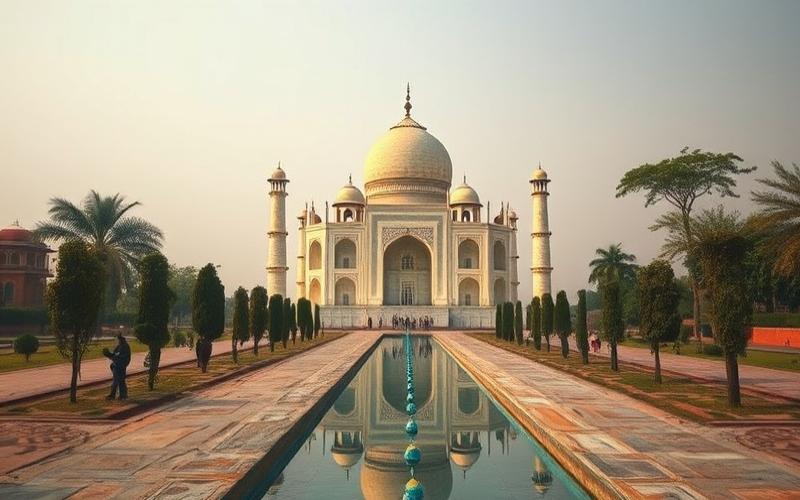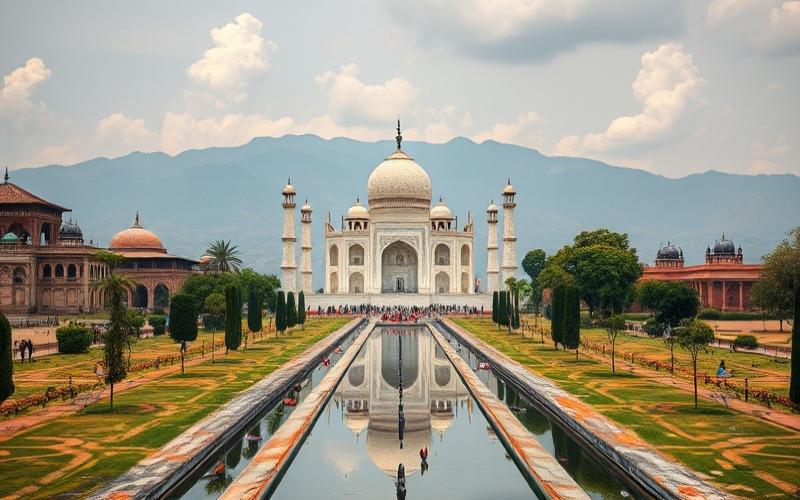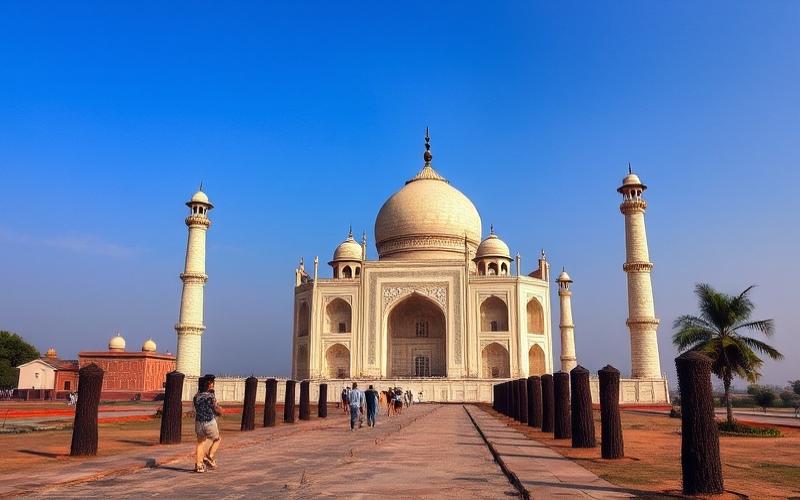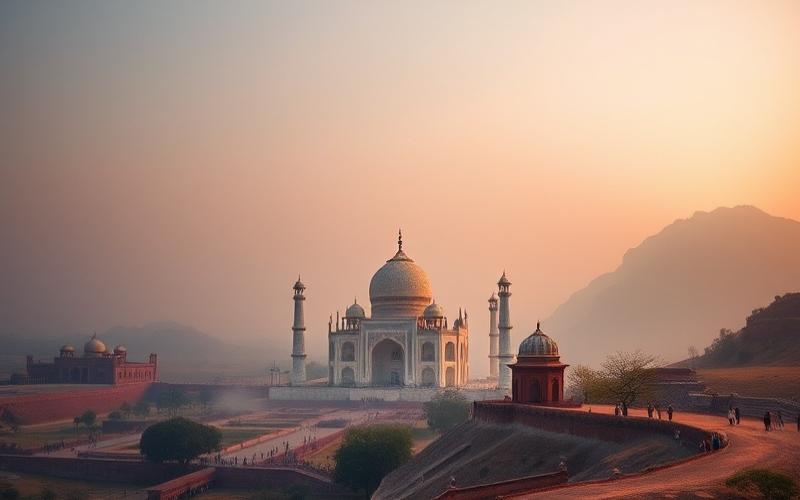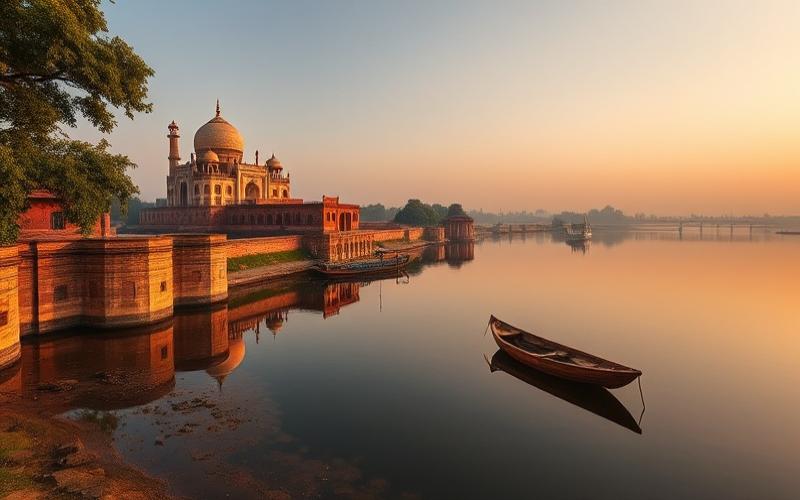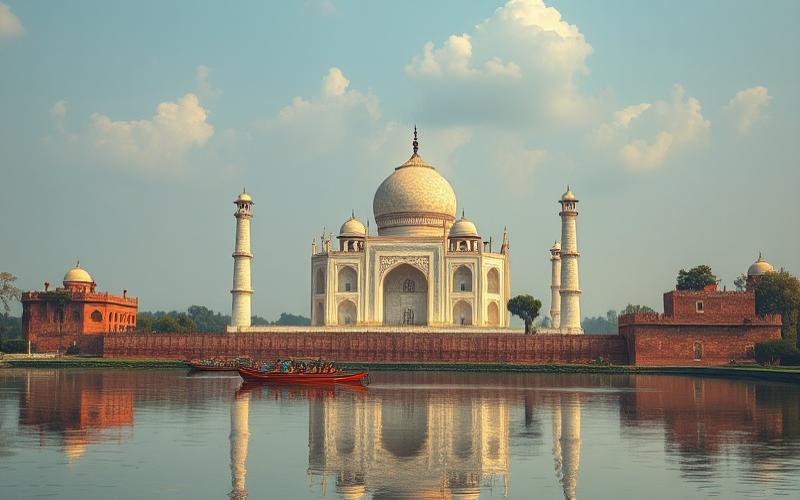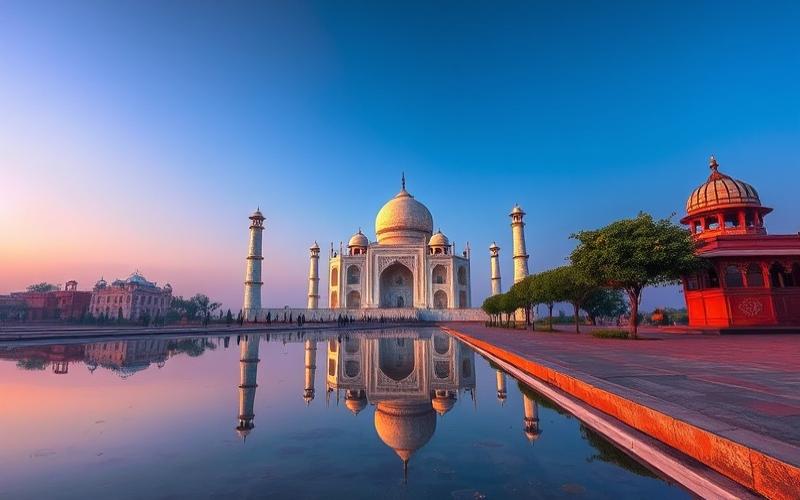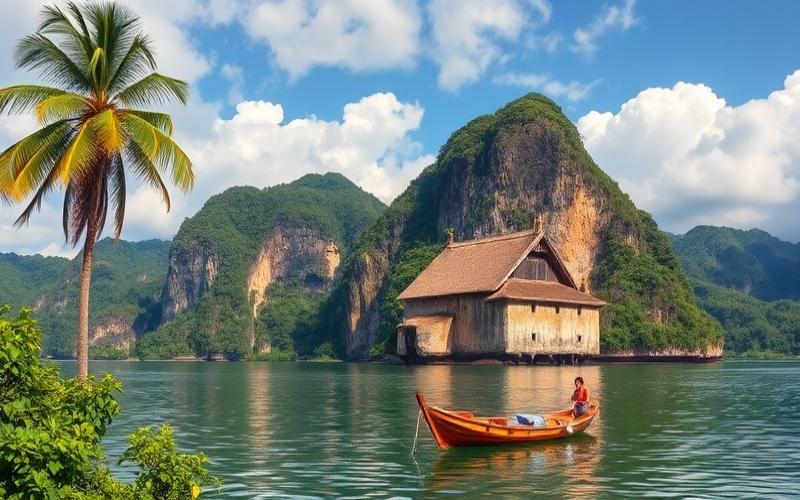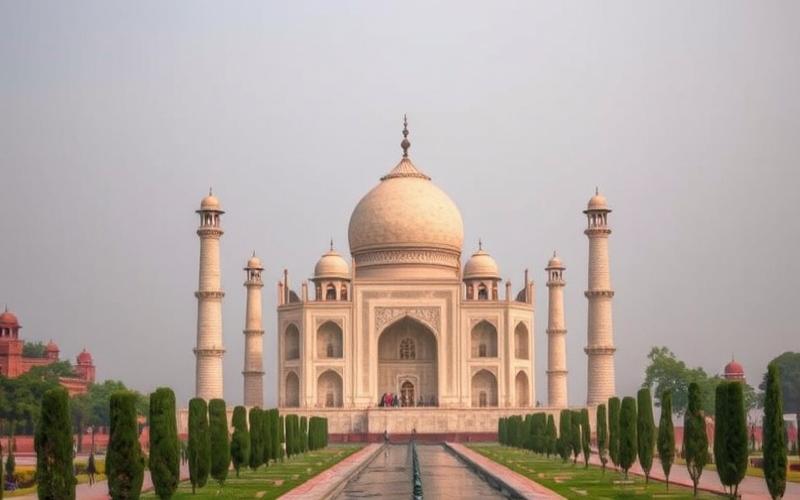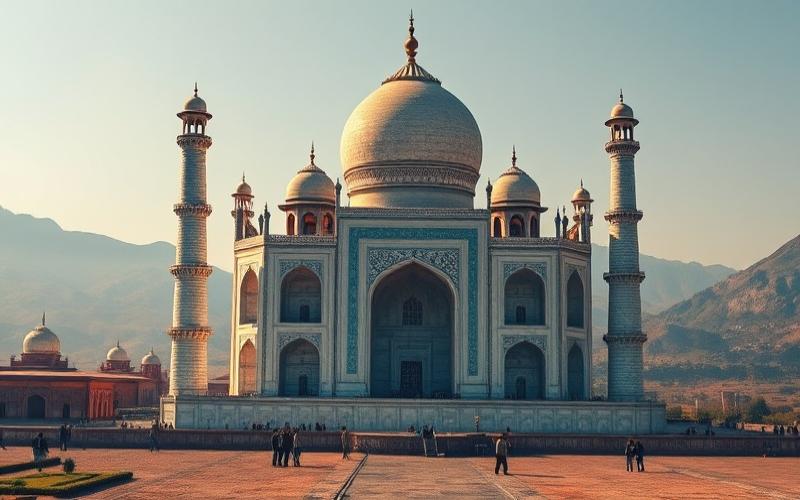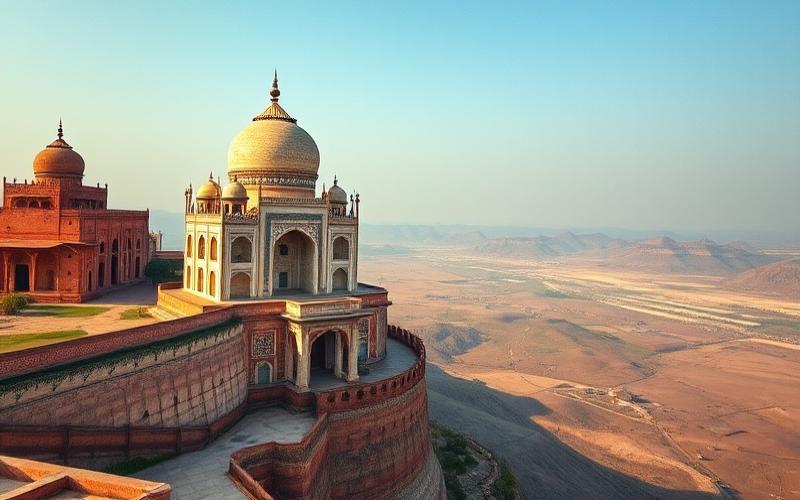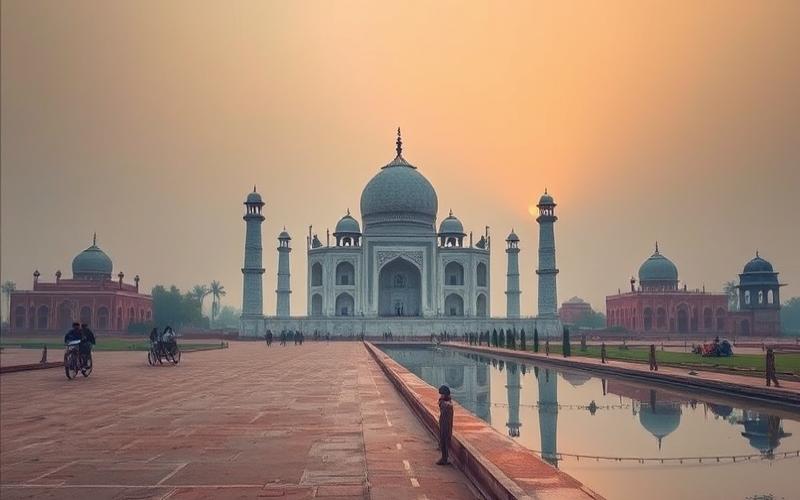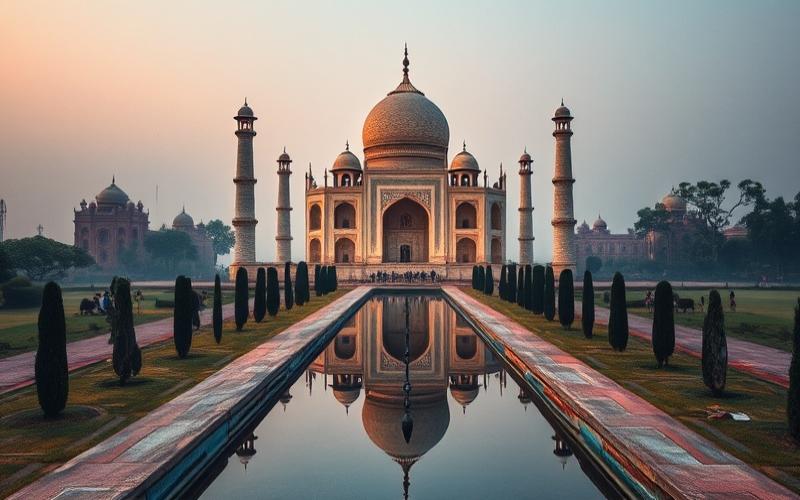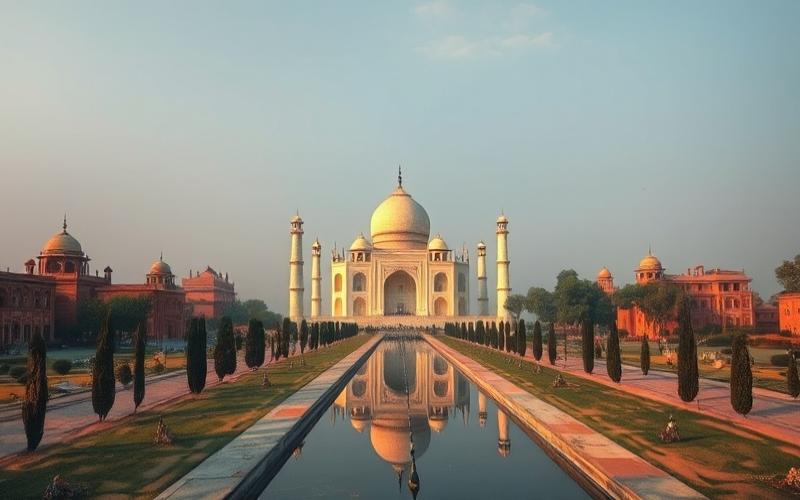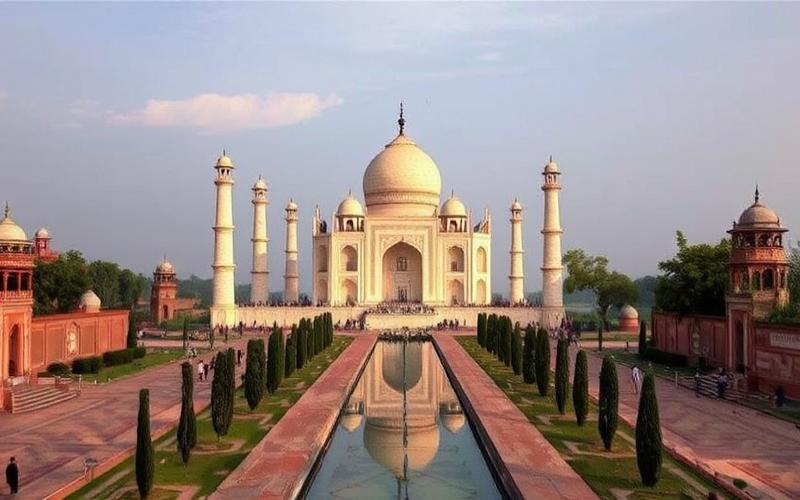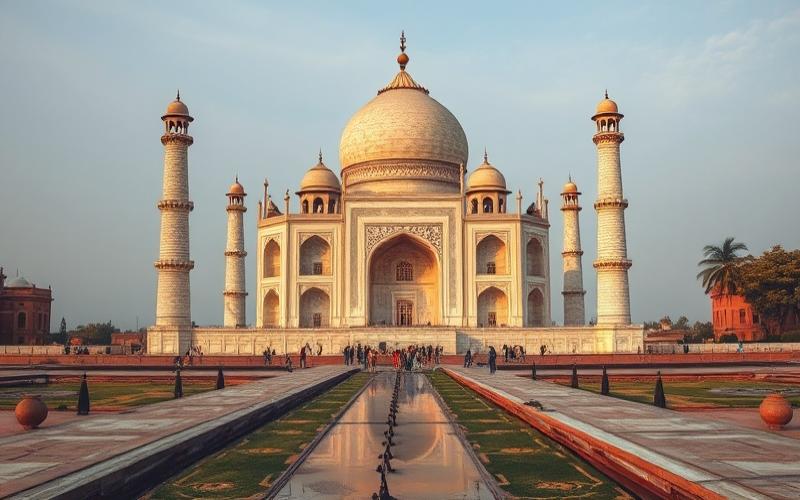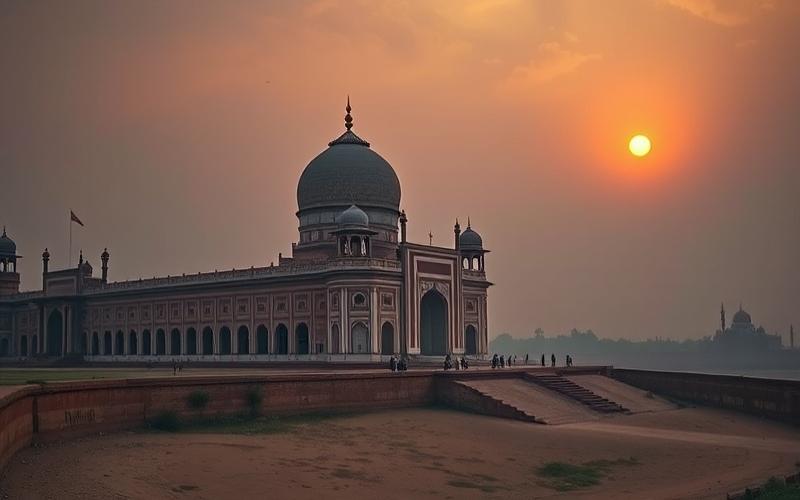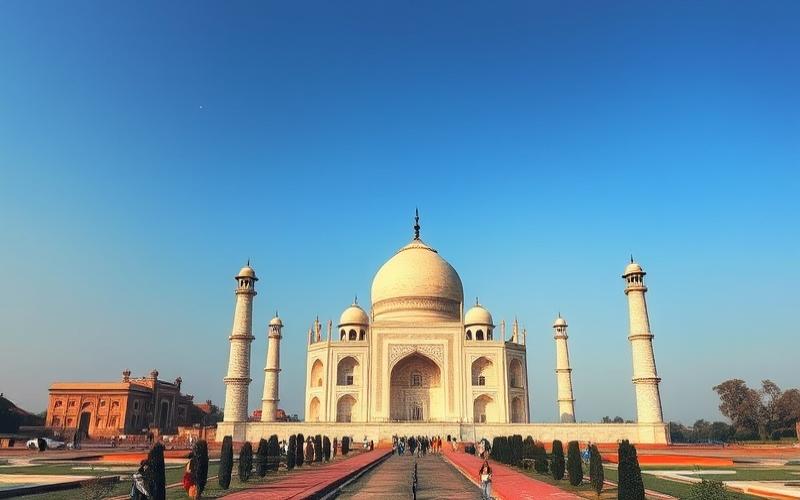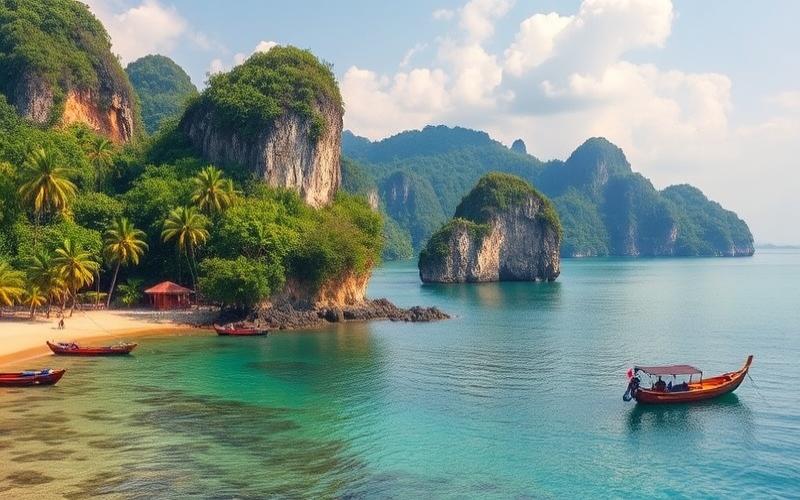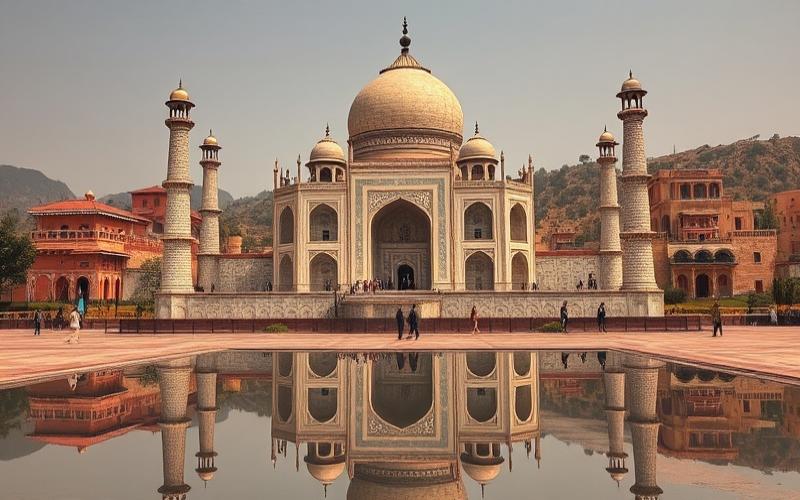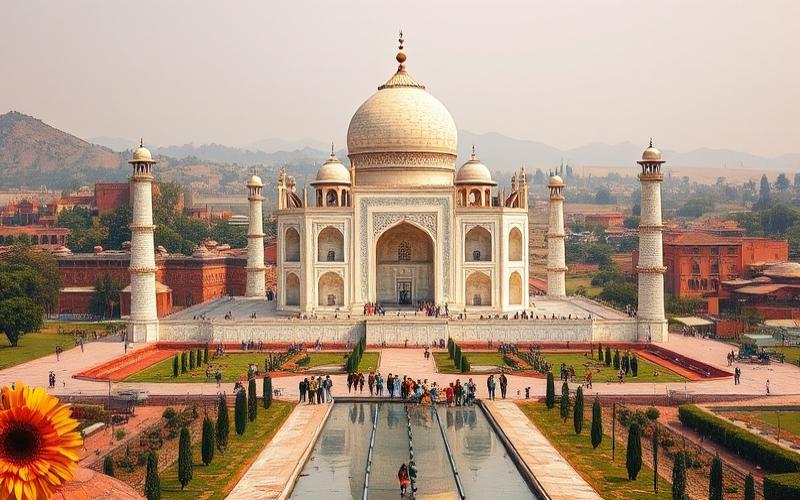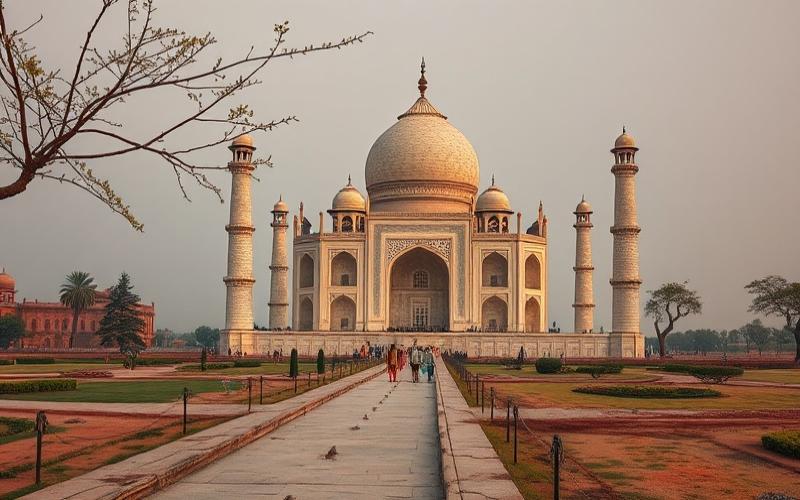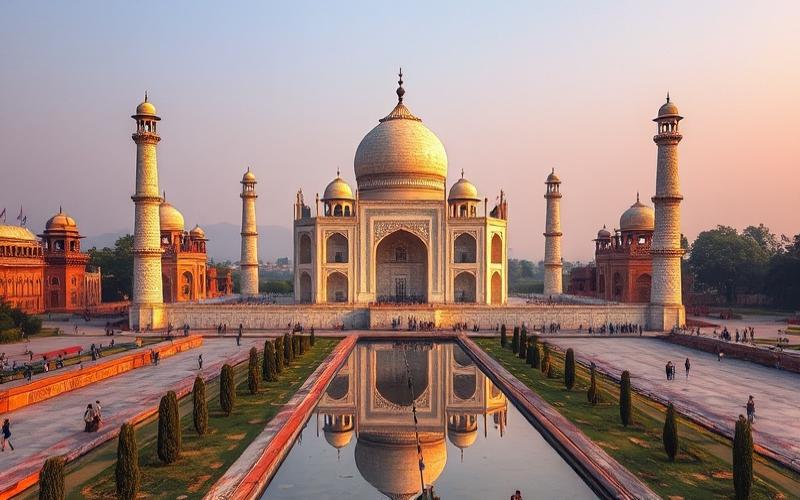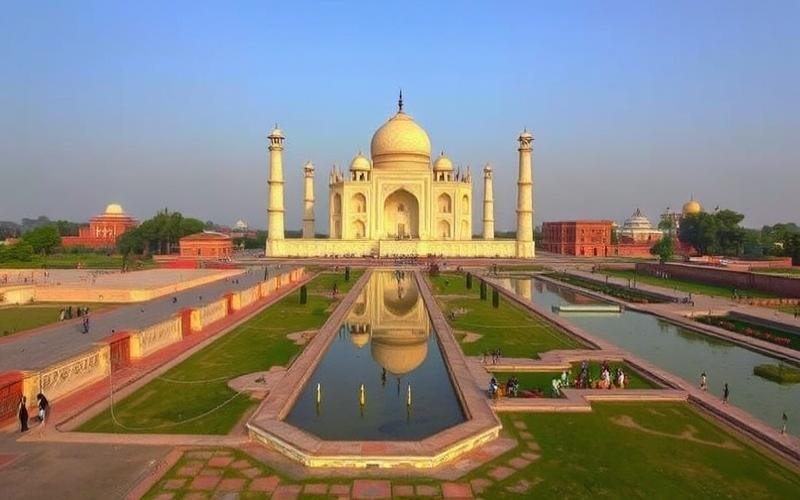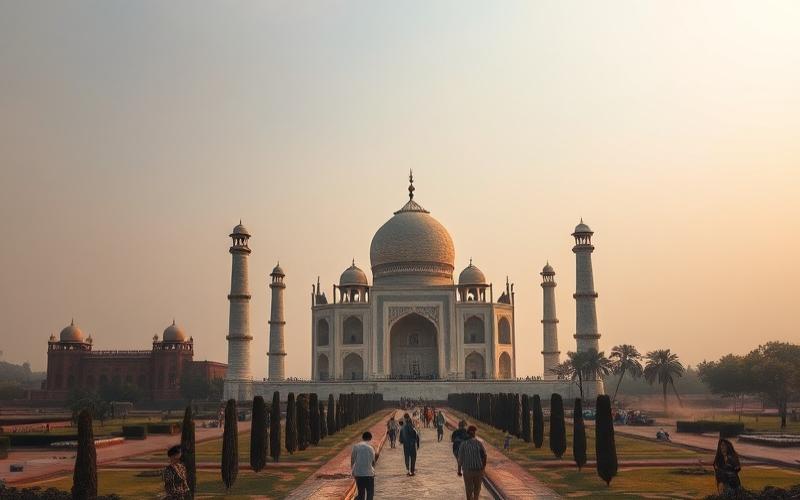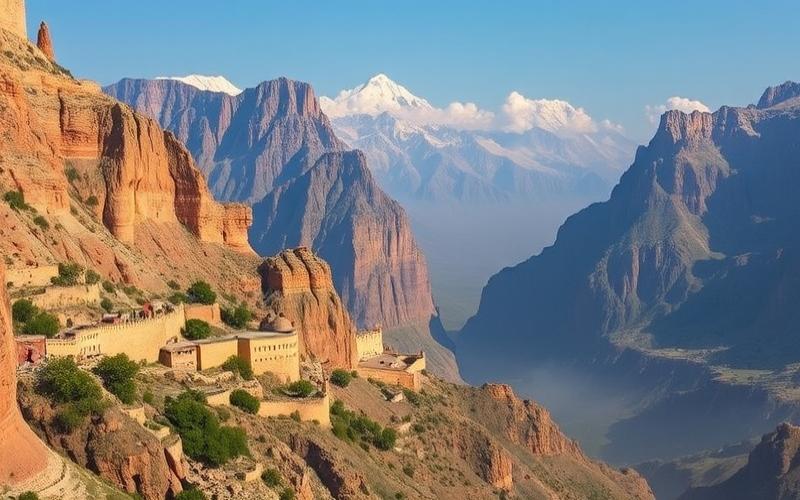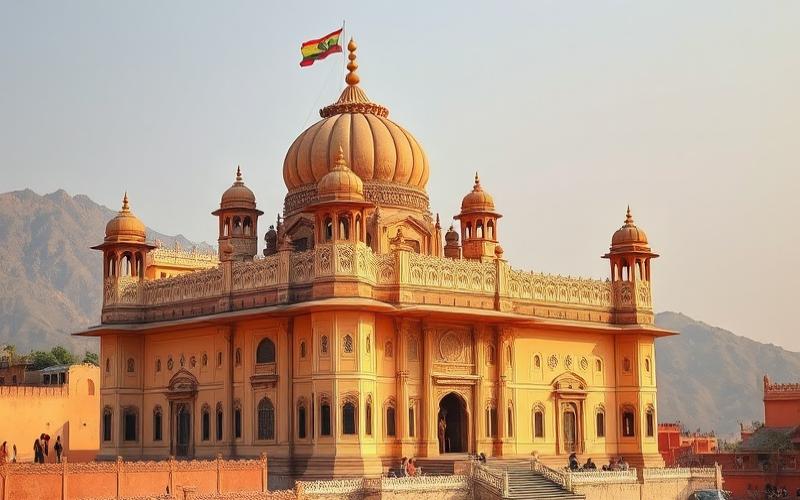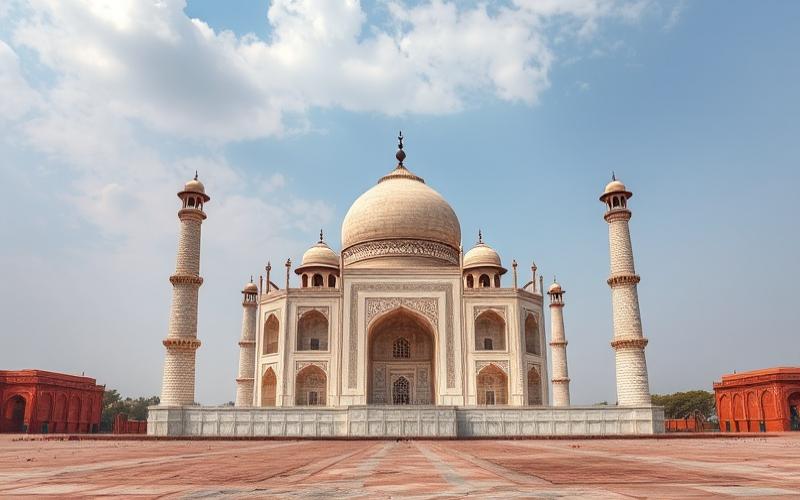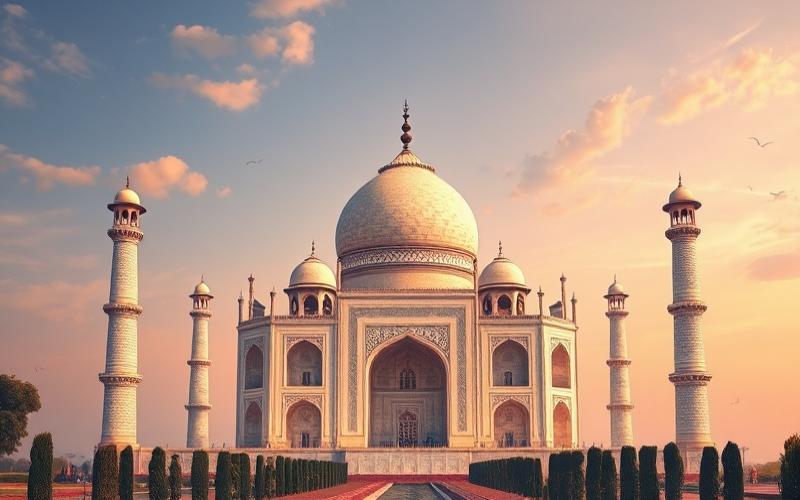
 Published on and written by Cyril Jarnias
Published on and written by Cyril Jarnias
India, a true mosaic of cultures and landscapes, fascinates with its breathtaking monuments and spiritual riches. From the majestic Taj Mahal to the sculptural temples of Khajuraho, this Asian country offers immersion into centuries of history and traditions.
Travelers seeking mystery will be captivated by the bustling alleys of Varanasi on the banks of the Ganges, while nature lovers will be dazzled by the splendors of Kerala and the lush panoramas of the Himalayas.
A journey to India is a unique sensory adventure, where every visit transforms into a story to tell, sparking in explorers an insatiable desire to discover more of its hidden treasures.
India’s Essential Treasures: Advantages and Disadvantages
India’s Must-See Treasures
| Site | City/State | Features |
|---|---|---|
| Taj Mahal | Agra, Uttar Pradesh | White marble mausoleum, symbol of love, UNESCO World Heritage site |
| Palace of Winds (Hawa Mahal) | Jaipur, Rajasthan | Pink facade, Rajput architecture, 953 windows for ventilation |
| Golden Temple | Amritsar, Punjab | Sacred Sikh site, gold-covered, sacred pool |
Other notable sites to mention: Agra Red Fort, Ellora and Ajanta Caves, Qutub Minar in Delhi, Khajuraho and Madurai temples, Amber Fort in Jaipur.
Advantages of India’s Tourist Treasures
- Cultural enrichment
Visitors discover unique architectural diversity, ancient traditions, and varied spiritual practices, promoting cross-cultural understanding. - Economic dynamism
Tourism generates significant income for local communities (hotels, guides, artisans, restaurants), creates jobs, and stimulates other economic sectors. - International recognition
These sites enhance India’s image abroad, attracting visitors worldwide and valuing national heritage. - Heritage preservation
Tourism revenue funds conservation and restoration programs.
Disadvantages Associated with Mass Tourism
- Overtourism
Mass influx of visitors, long lines, loss of authenticity, site saturation. - Environmental impact
Monument degradation (pollution, wear), increased waste production, pressure on local resources (water, energy). - Infrastructure issues
Sometimes insufficient road and rail networks, difficult tourist flow management, lack of adequate sanitation facilities.
Suggestions for Sustainable Preservation
- Implement visitor quotas for the most fragile sites to limit degradation and preserve the experience.
- Promote responsible tourism through awareness campaigns on heritage and environmental protection for visitors.
- Develop transport and accommodation infrastructure while ensuring limited ecological footprint (soft mobility, waste management).
- Involve local communities in site management and enhancement to ensure equitable benefit sharing.
- Diversify tourist offerings by promoting lesser-known sites to distribute flows and reduce pressure on major sites.
Preserving India’s treasures requires a balance between welcoming visitors and respecting heritage, to ensure their transmission to future generations.
Good to know:
India is home to must-see tourist sites like the Taj Mahal, the Palace of Winds in Jaipur, and the Golden Temple in Amritsar, offering immense cultural enrichment through their unique architectural diversity and deeply rooted heritage, while stimulating the local economy through tourism development. However, these treasures can also cause drawbacks such as overtourism threatening their preservation, significant environmental impact, and infrastructure issues that can harm the visitor experience. To preserve these sites while welcoming tourists, it’s crucial to adopt sustainable tourism practices, such as regulations on visitor numbers, environmentally friendly infrastructure improvements, and awareness efforts to encourage responsible tourist behavior.
Traveling to the Heart of India: The Ultimate Guide to Getting There
Main Transportation Modes to Reach India:
- International flights: The most common and convenient way to reach India from abroad.
- International rail connections: To date, there are no regular direct rail links connecting India to Europe or Africa, but some trains connect neighboring countries like Pakistan, Bangladesh, and Nepal.
- Road connections: Possible via Nepal, Bhutan, Bangladesh, and Pakistan, but they are rarely used by international travelers due to procedural complexity and road conditions.
Main International Airports and Cities with Frequent Connections:
| Airport | Served City | Features and Main Connections |
|---|---|---|
| Indira Gandhi International | New Delhi | Main hub, numerous connections to Europe, Middle East, Asia, and North America |
| Chhatrapati Shivaji Maharaj | Mumbai (Bombay) | Very busy, connections with Europe, Middle East, Asia |
| Kempegowda International | Bangalore | Specialized in flights to Asia and the Gulf |
| Chennai International | Chennai (Madras) | Main axis for Southeast Asia, Middle East |
| Netaji Subhas Chandra Bose | Kolkata | Connections with Southeast Asia and the Gulf |
| Rajiv Gandhi International | Hyderabad | Direct flights to Europe and Middle East |
Administrative Procedures and Entry Formalities:
- Mandatory visa for most nationalities, to be requested before departure (e-Visa available for many countries).
- Passport valid at least 6 months after entry date.
- Completion of an arrival form at the airport.
- Possible presentation of an exit ticket and proof of accommodation.
- Some vaccines may be recommended (hepatitis A/B, typhoid, yellow fever for travelers from risk areas).
Practical Tips for Traveling in India:
Best time to visit:
- October to March: drier climate, pleasant temperatures in most regions.
- Avoid the monsoon (June to September) especially in the south and west of the country, where rains can be very heavy.
- Summer (April-May) is very hot, especially in the northern plains.
Cultural festivals not to miss:
- Holi (March): festival of colors, celebrated throughout the country.
- Diwali (October-November): festival of lights, particularly spectacular in the north.
- Pushkar Camel Fair (November): Rajasthan.
- Durga Puja (September-October): Kolkata and West Bengal.
Additional tips:
- Prefer direct flights or those with short layovers in major European or Gulf hubs.
- Book domestic train or plane tickets in advance, especially during peak tourist season or festivals.
- Pack clothing suitable for heat and humidity, as well as a scarf for covering up in religious places.
For a successful trip to India, anticipate your administrative procedures, choose the timing based on climate and festivals, and opt for air connections to the country’s major international airports.
Good to know:
To travel to India, international flights mainly land at Delhi, Mumbai, and Bangalore airports, offering frequent connections to many global destinations. Besides flights, although international rail and road options are limited, some travelers use land routes from neighboring countries like Nepal. Before leaving, check entry requirements: most travelers need a visa, often obtained through an online e-Visa application. The best time to visit is from November to March to avoid the monsoon and enjoy pleasant temperatures, unless you want to experience the unique cultural experience of festivals like Diwali in October or Holi in March, which illuminate the country with colors and celebrations.
Staying in India: Accommodation Options for All Tastes
Staying in India offers a range of accommodation options suited to all traveler profiles, from refined luxury to rustic authenticity.
| Accommodation Type | Unique Characteristics | Price Range (average/night) | Iconic Location Suggestions | Amenities Offered |
| Luxury Hotels | Grand architecture, personalized service, spa, fine dining, private pools, unique views | 100 to 400 € and more | The Lodhi (New Delhi), Leela Palace (Udaipur), Radisson Blu (Coimbatore) | Spa, restaurants, pools, concierge, exclusive activities |
| Boutique and Charming Hotels | Intimate atmosphere, carefully decorated, often in historic or natural neighborhoods | 40 to 120 € | The Manor (Delhi), heritage hotels in Jaipur or Udaipur | Garden, dining, personalized services |
| Traditional Guesthouses (Homestays) | Cultural immersion, family welcome, typical architecture, exchanges with hosts | 15 to 50 € | Homestays in Kerala, Mayilveedu Guest House (Tamil Nadu), Rajasthan | Home-cooked meals, local advice, sometimes cooking classes |
| Budget Hostels | Friendly atmosphere, dorms or private rooms, ideal for backpackers, attractive prices | 5 to 20 € | Hostels in Delhi, Mumbai, Goa, Rishikesh | Wi-Fi, shared kitchen, common areas |
| Camping and Ecolodges | Proximity to nature, equipped tents or rustic facilities, eco-responsibility | 10 to 40 € | National parks (Ranthambore, Jim Corbett), Goa, Kerala | Campfires, outdoor activities, safaris |
Unique Characteristics and Experience Enrichment
Luxury Hotels: Staying in a palace or 5-star hotel like the Leela Palace in Udaipur allows you to live an experience worthy of the Maharajas, with ultra-personalized services, spa treatments, and exceptional views of monuments or lakes. These establishments often blend historical heritage and contemporary comfort.
Traditional Guesthouses: Ideal for discovering Indian hospitality and immersing in local culture. Exchanges with families offer an authentic perspective on culinary traditions, festivals, and daily life.
Budget Hostels: Perfect for meeting other travelers and exploring India on a small budget, while enjoying a dynamic atmosphere and community activities.
Camping and Ecolodges: Staying in the heart of nature, participating in safaris or hikes, promotes discovery of Indian biodiversity while adopting an environmentally respectful lifestyle.
Cultural Aspects and Practices to Consider
Location: Choosing accommodation near major sites (e.g., Taj Mahal in Agra, Rajasthan palaces, historic neighborhoods of Delhi) facilitates travel and optimizes visiting time.
Seasonality: Rates vary by season. High season (November to March) corresponds to the most pleasant period, but also the most crowded and expensive. It’s advisable to book several months in advance for luxury hotels and highly sought-after locations.
Booking and Practical Tips
- Compare traveler reviews and check included amenities (Wi-Fi, air conditioning, breakfast).
- Prefer recognized platforms to avoid scams.
- For guesthouses and homestays, contacting hosts directly can provide personalized advice and sometimes better rates.
To remember: India offers a diversity of accommodations where each type provides a unique gateway to the country’s cultural, natural, and human richness. The choice will depend on budget, desired comfort level, desire for authenticity or luxury, and proximity to sites to discover.
Good to know:
In India, accommodation options are varied and adapt to all budgets and preferences: from luxury hotels like the Taj Mahal Palace in Mumbai, offering sumptuous rooms and high-end services, to economical youth hostels providing a friendly atmosphere for travelers with limited budgets, around 500 INR per night. Traditional guesthouses, often managed by local families, allow for authentic cultural immersion, while glamping around Rishikesh or in the Thar Desert offers a unique nature-close experience. Average prices for standard accommodations range between 1,500 and 5,000 INR, depending on the season. When booking, prefer establishments near major tourist attractions to save on transportation, and remember to book in advance, especially during high season, to avoid price surges. Travelers should also familiarize themselves with local customs, such as removing shoes at the entrance of traditional accommodations, to ensure a pleasant and respectful experience.
Disclaimer: The information provided on this website is for informational purposes only and does not constitute financial, legal, or professional advice. We encourage you to consult qualified experts before making any investment, real estate, or expatriation decisions. Although we strive to maintain up-to-date and accurate information, we do not guarantee the completeness, accuracy, or timeliness of the proposed content. As investment and expatriation involve risks, we disclaim any liability for potential losses or damages arising from the use of this site. Your use of this site confirms your acceptance of these terms and your understanding of the associated risks.

